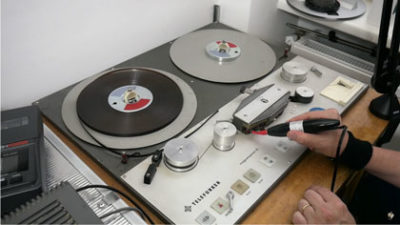Getting Creative with Splicing Tape
Hainbach is an Ambient artist from Germany, and he released a video this week explaining how he managed to splice tape loops together. I don’t own a tape machine, and I’m sure that many people reading this don’t have one either, but the process is exciting none-the-less. Walking you through his messy workflow, Hainbach creates a loop using a Roland Juno-60, Roland SH-02, a piano, and a Rhodes.
The first thing Hainbach does is clean the heads of the tape machine using rubbing alcohol and a Q-Tip. Next, he demagnetizes the heads to ensure that they effectively erase, playback, and record accurately. Once everything is set up, he begins cutting tape and splicing it together. This is actually Hainbach’s first attempt at splicing tape loops, so his process is far from flawless.
One of the top YouTube comments on the video by Paul Mitchum tells Hainbach that he should “Use a splicing block, especially for taping the bits together. Splice to leads so you can spool all tape onto an ‘ashtray’ rather than letting it run wherever. Never (ever) move the pancake without a reel underneath. But the most important of all… Always remember to degauss the tripod and the mic stand.”
The main thing I enjoy about this video is that it proves you don’t need to be a pro at something to get your hands dirty. Sure, this video may make old-school engineers who came up working with tape machines cringe, but Hainbach creates something original that otherwise wouldn’t exist. When creating something new, you don’t always have to worry about audio quality; this can be improved upon as you refine your creation process.
You can watch Heinbach’s full video via his YouTube channel to listen to the ambient loop he creates using his tape machine.
If you’re looking for the “proper” way to splice tape together, I’d recommend you check out the video “Tape Splicing Techniques” by Clemson Audio on YouTube. Dr. Bruce Whisler, Director of Audio Technology at Clemson University provides a clear, comprehensive walkthrough on how to efficiently cut and attach tape together.
Charles Hoffman is a Mixing and Mastering Engineer at Black Ghost Audio. After graduating from the University of Manitoba with an English degree, Charles completed his education at Icon Collective in Los Angeles, CA.
Please note: When you buy products through links on this page, we may earn an affiliate commission.









